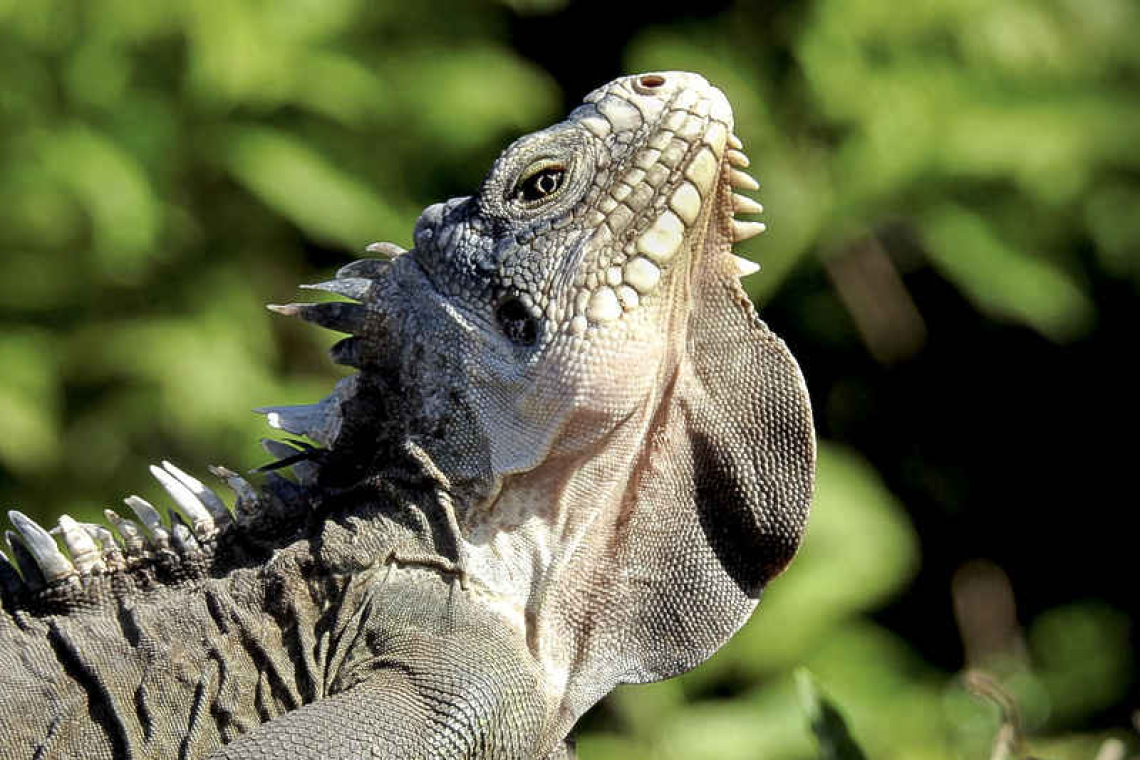The Lesser Antillean Iguana. Photo by Philippa King.
ST. EUSTATIUS--The Dutch government is set to officially propose moving the Lesser Antillean Iguana (Iguana delicatissima) from Annex III to Annex II of the Protocol concerning Specially Protected Areas and Wildlife (SPAW) during the next conference of the parties for the Cartagena Convention on Aruba in October.
“This change will give the authorities in the Caribbean the tools they need to further protect this species,” said the Dutch Caribbean Nature Alliance (DCNA) on Thursday. “This upgrade would mean that these iguanas would be under the highest level of protection, meaning the possession, trade, or even disturbance of this species is forbidden.”
Known for its striking appearance, the Lesser Antillean Iguana is endemic to the islands of the Lesser Antilles. In the Dutch Caribbean, the species is only present on St. Eustatius. It formerly inhabited St. Maarten, but it has since become extinct across the island.
Typically found in scrub woodlands, dry tropical forests and mangroves, these iguanas are also known to venture into urban areas and human-altered landscapes, such as abandoned quarries.
The International Union for Conservation of Nature (IUCN) has classified the species as critically endangered, but it still faces numerous conservation challenges, such as habitat loss due to human activity, poaching in the exotic pet trade, and predation by cats, dogs and mongooses.
However, DCNA says the main reason for the decline of the Lesser Antillean Iguana is competition from non-native Green Iguanas (Iguana iguana).
“Green iguanas can compete with native iguanas for resources, and interbreeding between the species leads to hybridisation – a process through which the native population is slowly displaced,” said DCNA.
The Lesser Antillean Iguana plays a crucial role in St. Eustatius’ ecosystem. On the island, the species is distinguishable by the lack of a large scale on the corner of its jaw and the absence of black stripes on its tail. These black stripes are a distinctive feature of the non-native Green Iguana.
According to DCNA, there has only been one confirmed sighting of Green Iguana in St. Eustatius. However, DCNA noted that this does not eliminate the risk of non-native iguanas becoming invasive.
To safeguard the Lesser Antillean Iguana, conservation efforts have been implemented in St. Eustatius.
For one, the species is protected under the law. Additionally, protected areas have been established to preserve iguana habitats, and research and monitoring programmes have improved understanding of their behaviour, population dynamics and habitat needs, said DCNA.
“Although these steps are important for their protection, it is also important that residents and visitors stay vigilant in protecting these local iguanas from the continuous threat of non-native iguanas arriving from, for example, St. Maarten,” said DCNA.







